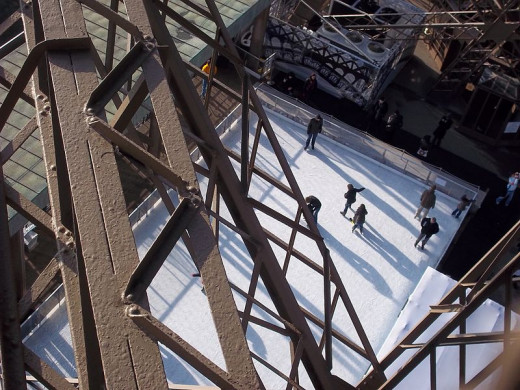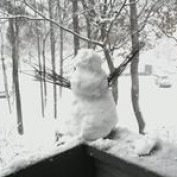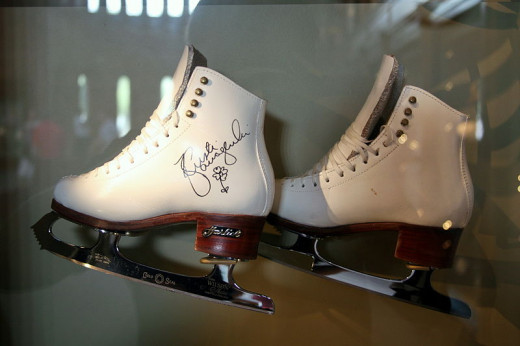How To Stop In Ice Skates

If ice skating sounds fun but you find yourself wondering how to stop in ice skates, there are several ways you may want to try learning. When starting to learn these stops, attempt them at slow to moderate speeds and remember to keep your knees slightly bent at all times. The more pressure you apply, the quicker you will stop. Avoid learning these stops within crowds as you could fall or cause others to. I have also included videos of these stops. While the title of this is How To Stop In Ice Skates, please know that these stops are used in skates of all types.
Among the easiest is the T-stop. Imagine creating the letter t with your feet.
- Skate forward at slow to moderate speed with both arms held up and out to each side of your body. You should be looking straight ahead with your chin/head up, do not look down at the ice. Do not skate too fast and keep both knees slightly bent.
- Slightly lift whichever foot you prefer while going forward on the skating leg.
- Place your foot onto the ice behind you, think of creating a t-shape on the ice.
- You will feel yourself begin to slow. The more pressure you apply to the rear foot, the more quickly you will stop. Practice makes perfect.
- The one foot snowplow will be another option that is best learned after you've mastered the two foot snowplow. The one foot snowplow utilizes the force from just one foot instead of both feet. Both feet can remain in contact with the ice
- After mastering this move, you will be able to stop on a dime, averting collisions with other skaters or covering skaters of your choice in ice shavings.

The next stop is the snowplow. This is a fun stop once you've got the hang of it but it can be tricky to learn for many people. Picture yourself standing slightly pigeon toed in your skates to bring yourself to a stop. Now I can tell you how to put it in action.
- Skate forward at slow to moderate speed with both arms held up and out to each side of your body. You should be looking straight ahead with your chin/head up, do not look down at the ice. Also, do not skate too fast and keep both knees slightly bent.
- Now make the effort to apply pressure to the ice through the ball of each foot, making your legs slightly turn inward. Slightly, not drastically. Your big toes inward at an angle similar to...a snowplow or an upside down letter V.
- You will feel yourself slowing down and coming to a stop, keep your arms up for balance. Do not attempt to dig into the ice or apply more than moderate pressure when learning this skill. The ability to stop on a dime comes with practice and should not be attempted immediately.

Another useful and fun stop is the hockey stop. This is likely the one you may have seen people getting covered in ice shavings with. That can be a side effect or at times, the sole reason for doing the hockey stop. It's common for some skaters to favor doing hockey stops with their left or right foot in front. As a right handed person, I prefer right my right side but can also do them with the left foot leading the way. Some people find this stop pretty scary due to the sideways motion while others find it easy, thrilling, or fun. You will know quite fast which camp you're a member of when learning it. By the way, I find it quite fun.
- Skate forward at slow to moderate speed with both arms held up and out to each side of your body. You should be looking straight ahead with your chin/head up, do not look down at the ice. Also, do not skate too fast and keep both knees slightly bent.
- Depending on your preference and most likely whether you are right or left handed, decide which foot will be leading the way on your hockey stops.
- When ready, you will need to transition from skating in a straight path to gliding sideways across the ice to come to a stop. Apply pressure to the ice by bending your knees using equal pressure through both legs and feet.
- You will feel your speed decrease depending upon how much force you are applying to the ice. Do not make the mistake of digging into the ice when learning this move or you'll stumble or take a spill.
- The ability to stop on a dime comes with practice and should not be attempted immediately. After mastering this move, you will be able to stop on a dime, averting collisions with other skaters or covering skaters of your choice in ice shavings.
© 2013 Express10
T-stop
Snowplow Stop
Hockey Stop

- Skating Ettiquette
Intended for those of all skating levels, these are some things to avoid so that you get the most enjoyable experience while ice or roller skating.
- Typical Figure Skating Expenses
Get into figure skating and go in prepared. Learn more about typical figure skating expenses for various levels of the sport.
- How To Ice Skate For The First Time
No matter how young or old you are, you can ice skate if you are in good health. Learn what you should wear, how to do a couple of basic moves, how to get up from a fall, and more.
- Tantalizing Inspiration For Figure Skaters - Jayson Sutcliffe Video
Here is proof that triple jumps can be done on ice, quad, and pic skates. Take a look at Jayson Sutcliffe, Australian champ right here.





